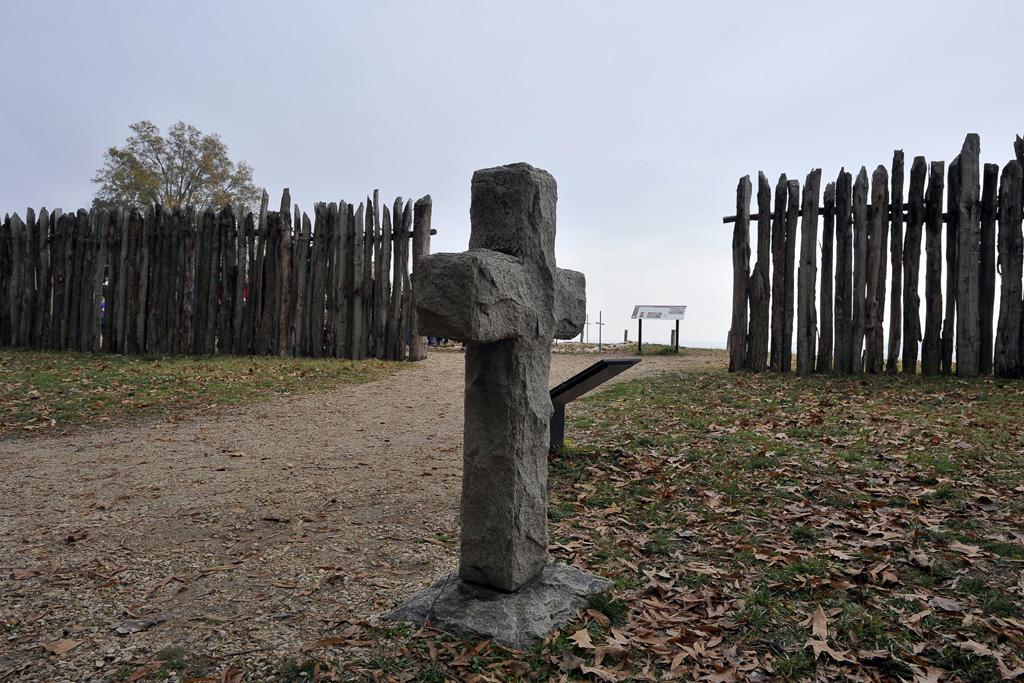Jamestown cannibalism confirmed by girl’s skeleton
A stone cross marking the grave of a 17th century settler is seen at the archaeological site of Jamestown, Va., on Nov. 22, 2011. Jamestown is the first permanent English settlement in America.
It's long been speculated that Jamestown colonists turned to eating each other when food ran out in harsh conditions, but archaeologists have been quick to dismiss the stories for lack of evidence.
Now, they have it.
Recently unearthed bones of a 14-year-old English girl show clear signs of cannibalism, according to Jamestown archaeologists and the Smithsonian's National Museum of Natural History.
More from GlobalPost: New temple found at famous El Paraiso archaeological site in Peru
“The chops to the forehead are very tentative, very incomplete,” Douglas Owsley, a Smithsonian forensic anthropologist who analyzed the bones, told Smithsonian Magazine.
“Then, the body was turned over, and there were four strikes to the back of the head, one of which was the strongest and split the skull in half. A penetrating wound was then made to the left temple, probably by a single-sided knife, which was used to pry open the head and remove the brain.”
More from GlobalPost: Sea of Galilee: Archaeologists discover ancient monument
The cannibalism occurred sometime during the winter of 1609-10, often referred to as the "starving time" due to drought and severe famine.
At least a half-dozen accounts of occasional acts of cannibalism exist from that winter, including one man who "salted" and began eating his pregnant wife.
The human remains will be placed on display at Jamestown. At the Smithsonian, curators plan to display a digital reconstruction of the girl's face in an exhibit about life in the colony.
The story you just read is accessible and free to all because thousands of listeners and readers contribute to our nonprofit newsroom. We go deep to bring you the human-centered international reporting that you know you can trust. To do this work and to do it well, we rely on the support of our listeners. If you appreciated our coverage this year, if there was a story that made you pause or a song that moved you, would you consider making a gift to sustain our work through 2024 and beyond?
